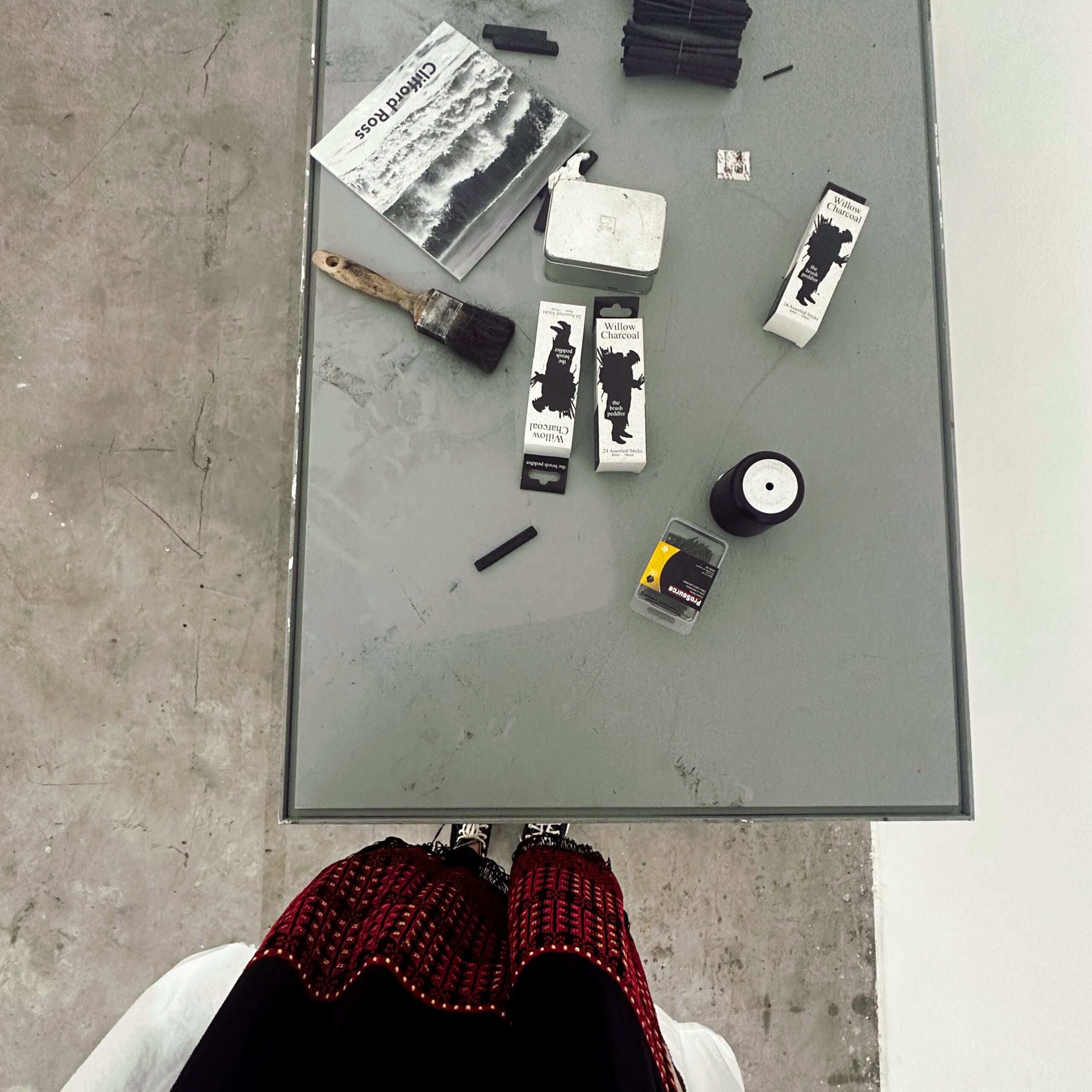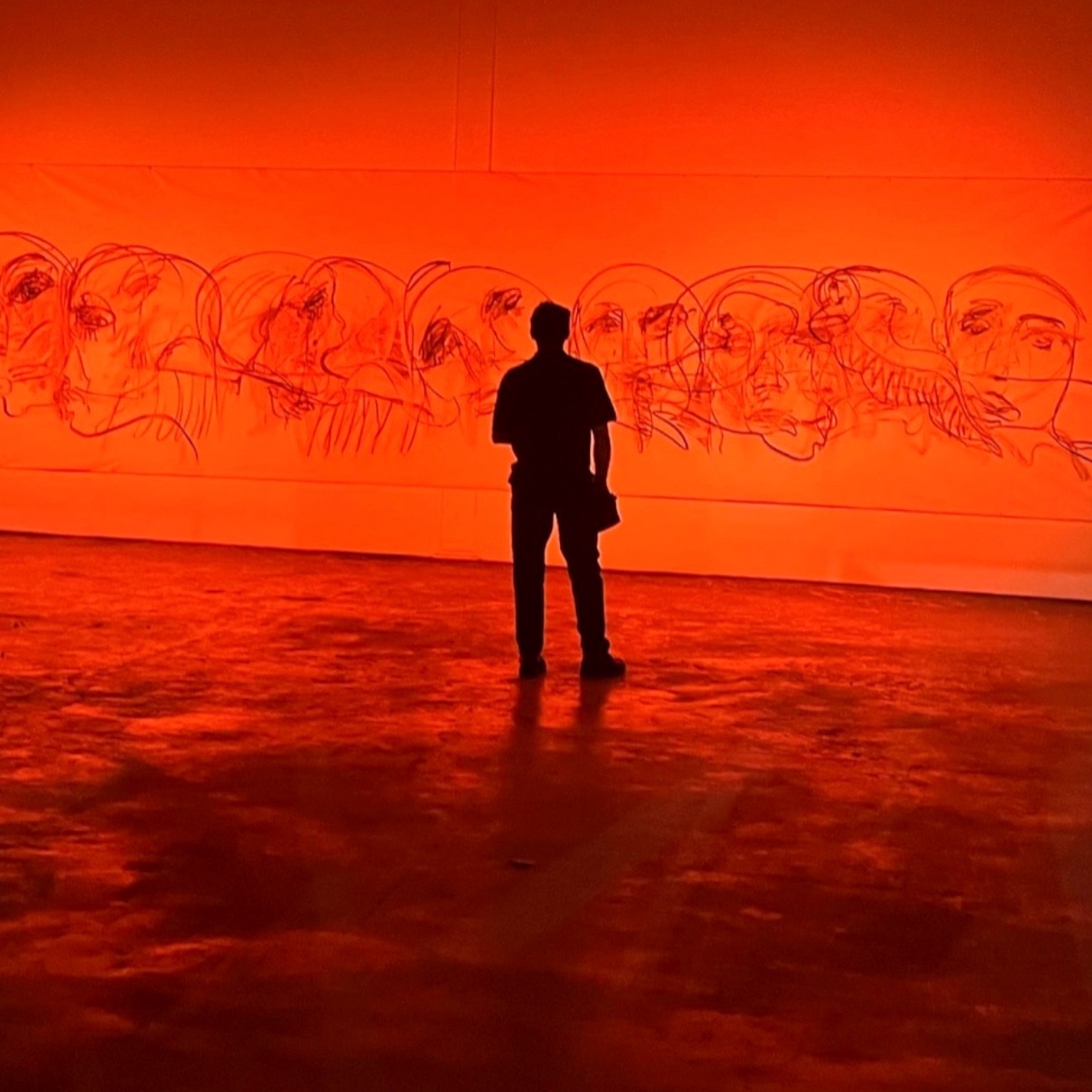


On Sunday at 8 PM, Hazem Harb made a powerful return to Alserkal Avenue with a performance piece titled “Dystopia is not a noun,” featuring charcoal on paper. Originating from Gaza, the artist visualized his emotions, echoing the collective sense of loss felt by many due to the ongoing genocide in Gaza.
The performance was profoundly moving, evoking tears as Hazem’s energy resonated throughout the space, touching every spectator.
Returning to Alserkal, I spent time with the artwork, approaching the table with boxes of charcoal. Hazem intentionally chose this medium to resemble the black carbon dust coating homes, humans and the city in Gaza, that Hazem calls home. Reflecting on our last conversation about his visit to Gaza to see his father and recalling imagery of the once-beautiful Gaza now destroyed, Hazem blended abstraction and figuration in this powerful artwork.
As I sat and stared at the piece, flashes of visuals inundated through social media came to mind—all the people with dreams, futures, and lives destroyed.
Recently, I pondered art during these challenging times, expressing that “these are the moments when artists should engage; this is the purpose of art—whether expressed through literature, poetry, or fine art—as a form of expression during our darkest times when hope may seem elusive.” Hazem echoed a similar sentiment in an article by Maan Jalal for the National:
“I don’t want to say that art healed me; it also helped save me a little during this time from my personal pain.”
“It isn’t art’s responsibility to change the world. It can, at least, express humanity’s disasters, express things that cannot be said in the news and through politicians,” he says. “So of course, art matters.”